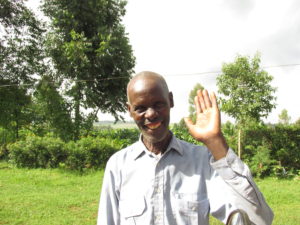Kenya is a multi-ethnic state in the East Africa region. It is primarily inhabited by the Bantu and Nilotic population, with some Cushite people.
Bantu are the single largest population in Kenya. The term Bantu first originated from the Western Africa, Niger-Congo language. Most Bantu people are farmers; they are scattered in different regions of Kenya. Most are found in Central Kenya, western Kenya and Rift Valley. Some of the prominent Bantu groups in Kenya include the Kikuyu, the Luhya, the Meru, the Mijikenda and the Kisii. The Swahili-speaking people are descended from Mijikenda that intermarried with Arab and Persian migrants.
Today I want to introduce you to the Luhya people, as we are working and serving in the midst of the Luhya tribe. Our center of operation is in Luhya land, therefore it’s our highest joy to share something brief about our host people.
Luhya are the second largest ethnic group in Kenya. They number about 5.3 million people, being about 16% of Kenya population. The name Luhya refers to both the people and their language. There are seventeen tribes within the Luhya people. These are Bukusu, Idakho, Isukha, Kabras, Khayo, Samia, Kisa, Marachi, Maragoli, Marama, Nyala, Nyole, Tachoni, Tiriki, Tsotso, Wanga and Batura. Among the Luhya community, Bukusu and Maragoli are the largest and perhaps most organized tribes.
Our immediate area is dominated by the Bukusu, the oldest and largest tribe in Kenya. For students and lovers of culture and tradition, I hope you will find knowledge and insight from this post. Here are some words of wisdom from one of our respected Bukusu elders, who regrets that the rich cultural history of his people has been neglected:
“The Bukusu do not have a functional cultural institution. The elites have not been able to return home and start the construction. If Bukusu can establish a cultural institution with proper leadership, they shall have demonstrated to the entire world that they exist and have a strong culture to cherish. …All historical sites should be done as part of our rich heritage and history for information in the tourism catalogue, so that tourists from abroad could locate and visit these sites.” (Elder Nick Kukubo)
Wazungu (white people) from England were among the first visitors to set foot in Bukusu land. Most of them were explorers, missionaries of different sects, geographers, scientists, farmers, and administrators. They were brought by water steamers through the port of Mombasa as an entry point. They introduced what we call the scramble of colonization through treaties with local chiefs. This was just the beginning of Bukusu exposure to the external world.
Joseph Thompson was the first explorer to walk in Bukusu land on foot, back in 1840. Men received him as river god, from whence the Swahili name Mzungu was derived. But still some Bukusu men did not accept them to pass through their land.
Bukusu clans have spread all over Western Kenya, Trans-Nzoia and North Rift regions. The Bukusu clan history is documented from about 1650 AD, through their known prophets and seers. These men prophesied that there should come white-garmented people in big baskets that would swallow people and vomit them at their appropriate destinations. This is assumed to be about about vehicles. They talked again about the butterflies carrying people in wings, which would of course be airplanes. They talked about long snakes coming, which was viewed as the railway line that later came through.
Before the Mzungu settlers came, Bukusu people were living on the slopes of Mt. Elgon and other fertile places. Naturally they were small scale farmers, growing traditional crops such as millet. After harvesting, they used it to brew their own beer, busela, and could entertain themselves in the cool of the evening.
The mountain of Elgon forests gave fruits, birds, and honey. The natives hung their beehives, known as Kimisinga, making traditional medicines to soothe throats caused by common colds. Kamalea was harvested from the shoots of young bamboo stems and pounded together with groundnuts in a mortar.
Bukusu are also known for their very unusual male circumcisions practices, though they don’t practice female circumcision as some other tribes do. In these practices, boys of the age 8-15 are gathered from different families at every even year. The festivals are always full of vigorous dancing and partying, at least for a week’s time. When the final day arrives, all the boys are taken to the riverside very early in the morning for the final ceremony, escorted by the entire village, and must (this the unusual part!) walk back completely naked. After their circumcision they are officially recognized as men of the Bukusu tribe. This practice is one of the important rites of passage in the Bukusu tribe.
I hope you enjoyed this exposure to a small part of African culture, our people the Bukusu.

